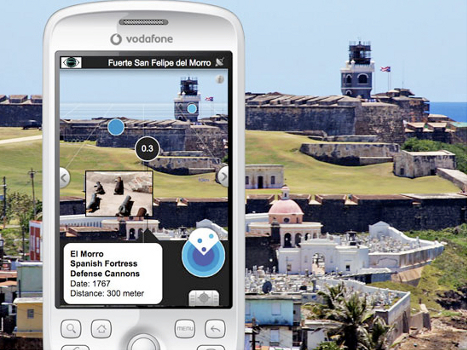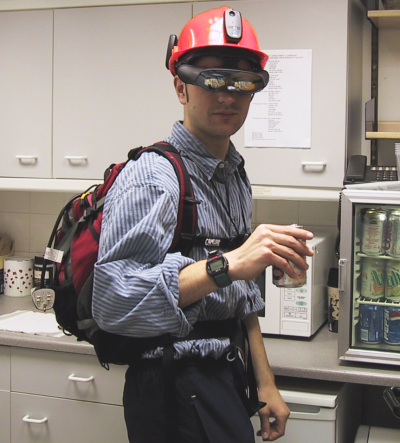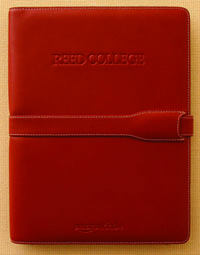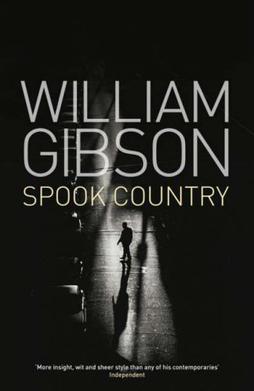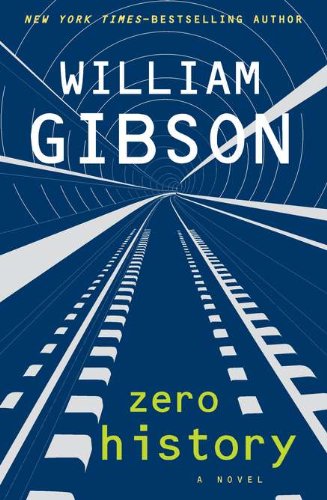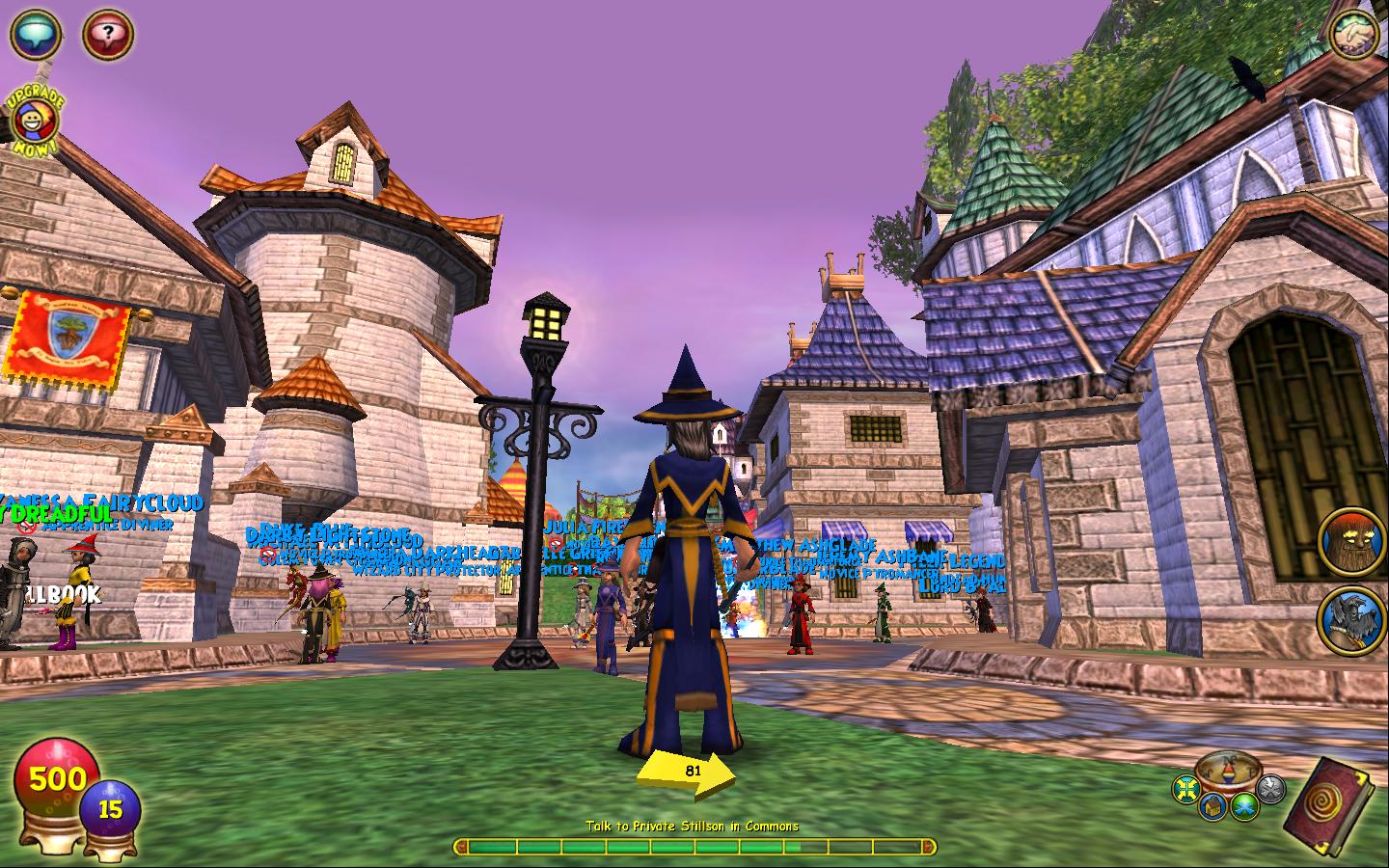Augmented Reality in Education
Thursday, November 18, 2010
The video game is so powerful. This TED talk, as so many are, gives me a new perspective on my world and the things I find important. It's so wonderful to better understand yourself, your culture and humanity through things that are familiar. Tom Chatfield's discussion of how the rewards work in gaming is amazing. This is at the core of what we need to bring to education. Through integrating this type of research and design into instruction you can really make huge strides in education and engagement.
As I listen this discussion one question comes to me: "What will the ethical obligations be once this code is cracked?" Many of you may already be familiar with Freud, but how many of you know that his an other psychologist works were used by the Nazi's and later the advertising industry. The harm and value gained from bot the Nazi's and Ad Agencies is evident. We must be very careful in how leverage this knowledge. Imagine these new techniques being used by Al-Qaeda.
I can't wait to see what happens in this field of study.
Thursday, November 11, 2010
What the Hell is Augmented Reality?
It escaped me that I might be actually read by those who might know a lot about augmented reality. Having been a fan of science fiction and ardent fan of both written and film speculative works, it is something that I’ve always imagined as being very real although it really has not been. If you’ve ever seen Star Trek and saw the captain or his crew access the Holo Deck or read the pages of Marvel and saw the X-Men go in the danger room then you can imagine what augmented reality has to offer to society and especially our students.
Augmented reality are computer simulations on mobile devices that are triggered by real world locations and environmental influences or surroundings. Augmented reality(AR) combines physical and virtual world contexts, dually. AR embeds learners, or any audience, in authentic situations enhanced by computer generated graphics and sound. AR also strives to engage users in a socially facilitated context, whose confluence elevates the interactivity and truly enhances communication and interactivity to new levels. The term augmented reality is used by me very broadly in my discovery process and blogging to include elements that others might not consider as what is popularly defined as AR.
Equipment
Light Augmentation – Provides small bits of information of data to the user that may not be provided very rapidly.
Resources:
http://www.ted.com/talks/pattie_maes_demos_the_sixth_sense.html
http://en.wikipedia.org/wiki/Augmented_reality
Wednesday, November 10, 2010
The Reed College Kindle Study: My Comments
The term augmented reality, which I guess as owner of this blog I should define for my audience, is a term for a live direct or indirect view of a physical real-world environment whose elements are augmented by virtual computer-generated sensory input such as sound or graphics (possibly in the future smell and touch). Looking at the definition AR devices could be extremely varied.
Being so varied I would like to include slate computers and e-books, which in some ways try to mirror books, which exist in the real world (for now). I was exploring twitter links and retweets and found mention of a report done on the much touted study by Amazon of the Kindle DX in college environments. This study at Reed College was undertaken as a product evaluation for Amazon, but was also grown by the evaluators as an opportunity to identify the impacts that Kindle/ebooks might have on teaching and learning activities.
The courses chosen were text heavy and tech light courses. The faculty chosen was fairly technically astute. 46 Students were registered for the classes and nearly all the students participated (43 students participated). To garner feedback web surveys were used pre and post assessment, along with e-mails.
Positive finding of the Amazon Kindle were they were much easier to read than on laptops, the form factor (able to sit and lay), battery life was outstanding, proved very durable, very little extra paper had to be used, wireless and cellular distribution and the single function benefit.
Some of the negative findings were materials availability, PDF formatting, PDF distribution (10 cents), lack of color & images, refresh rate lagged behind LCD screens (problem with skimming), pagination (not able to be used as reference), multiple texts, with the real pain being in highlighting and adaptation. Of particular note is the comparison video of working with the iphone vs. kindle.
Content comprehension was the big looser in the Kindle study and implementation. It seems that the students were not able to interact with the media as efficiently as was done on paper. They were only able to read linearly and not able to highlighting and annotating. The students no longer interacted with the text, merely passively reading the text.
I think the students should have been given the option of getting the text as well. Through formative assessments throughout the study adjustments could have been made as well. With these adjustments being made within the study better information could have been garnered on using ebooks as a compliment to current materials. I noticed that it was mentioned about the apprehension of students wanting to layout additional money for an additional device beyond the books and laptops was still in questions. Speaking as a student, I couldn’t wait until the ipad was available and the only reason I didn’t get a Kindle immediately was because of its size. The product I was actually blown away by initially was that of the Plastic Logic team (yet to come out as promised). My “first kiss” product was the Sony E-book Reader, which made me fall in love with the whole bunch of them.
The future of ebook readers has definitely arrived since last fall when this study was done. I can’t wait to see how the academy welcomes the readers with its new drop in price point and widening availability and growing prices of texts.
References
Dr. Martin Ringle, D. T. M. (Producer). (2009, November 10, 2010) Amazon Kindle DX Pilot Project Overview. Video retrieved from http://bcis.pacificu.edu/roundtables/Presentations/2010/index.php
Tuesday, November 9, 2010
William Gibson...Futurist
Many things have been foreshadowed by writers of science fiction. William Gibson gave language to cyberspace and continues to help us analyze how we humans interact with each other through our technology. More than predicting the future, William Gibson helps us to frame the present and examine the near future and path that our techno-culture is taking.
Read his following books to learn more about social networking and augmented reality and the global techno interconnected world we are creating.
1. Scuba Diving
First mentioned: 20,000 Leagues Under the Sea, Jules Verne, 1875
Although diving suits existed when Jules Verne’s novel was published, they were the stiff, clumsy ones that limited the user’s movement and connected them via a long tube to an air supply above. But in 20,000 Leagues Under the Sea, characters use a backpack-sized breathing apparatus that presaged modern divers’ tanks decades before they were used.
2. Credit Cards
First mentioned: Looking Backward, Edward Bellamy, 1888
Edward Bellamy’s novel envisioned a 21st century in which money was eliminated and people carried cards that held a certain amount of capital that could be spent. The idea’s a little closer to debit cards than credit cards, though the principle is the same.
3. Automatic Doors
First mentioned: The Sleeper Awakes, H.G. Wells, 1899
Originally published as When the Sleeper Wakes but given a title tweak when Wells polished it in 1910, this novel was the earliest depiction of the kinds of automatic doors that are now used in everything from banks to convenience stores. Wells’ device rolled up like a desktop rather than slide vertically, though it’s the same core idea.
4. The Rotating Space Station
First mentioned: The Prince of Space, Jack Williamson, 1931
Although many people first took notice of the idea of rotating space stations in the 1968 film 2001: A Space Odyssey, the concept was first popularized in 1931 in Jack Williamson’s novel The Prince of Space. The story’s City of Space was a large metal cylinder that rotated to simulate gravity through outward force. Modern space flight uses this same idea.
5. Artificial Womb
First mentioned: Brave New World, Aldous Huxley, 1932
Aldous Huxley’s dystopian Brave New World was the first sci-fi story to describe a world in which children are grown in artificial wombs outside the mother. The tech now has very real implications.
6. Geosynchronous Satellites
First mentioned: “Extra-Terrestrial Relays,” Arthur C. Clarke, 1945 (Wireless World magazine)
Arthur C. Clarke makes repeat appearances on this list, thanks to his inventiveness and method for conjuring seemingly magical new devices that would soon be commonplace. In 1945, he published an article titled “Extra-Terrestrial Relays: Can Rocket Stations Give Worldwide Radio Coverage?” that posited the idea of satellites that orbited the Earth in such a way that they were always over the same spot on the planet. Because of his forward thinking, geosynchronous orbits are now often referred to as “Clarke orbits.”
7. Television Surveillance
First mentioned: 1984, George Orwell, 1949
George Orwell’s classic dystopian novel about totalitarianism spawned a number of phrases and ideas, from Big Brother to doublethink. It was the concept of omnipresent telescreens that foreshadowed the real-world rise of security cameras and closed-circuit television as a criminal deterrent. We now deal every day with cameras and monitors that seemed farfetched 60 years ago.
8. The Pocket Calculator
First mentioned: Foundation, Isaac Asimov, 1951
Isaac Asimov’s multi-volume Foundation series has won numerous awards, and it was in the first novel that he introduced a concept that would later be recognizable to school children around the world. Calculators in 1951 weren’t remotely pocket-sized, and computers spanned desks and entire rooms, but Asimov was already writing about a world where handheld computational devices were the norm.
9. The Inflatable Air Lock
First mentioned: Space Tug, Murray Leinster, 1953
This reference to inflatable air locks, a more compact alternative to fixed ones, appeared in print 12 years before the Soviet space vehicle Voskhod 2 used the same technology. That voyage was the first space walk in history.
10. Computer-Aided Design
First mentioned: The Door Into Summer, Robert Heinlein, 1956
Drafting programs that use computer software to create schematics and designs are now standard in the industry, but Robert Heinlein’s 1956 imagining of a computer-aided design system was a few years ahead of its real-world adoption. Real CAD use didn’t explode until the 1960s.
11. The Light Sail
First mentioned: The Lady Who Sailed the Soul, Cordwainer Smith, 1960
Light sails, also known as solar sails, use radiation pressure emanating from stars to push an object’s sails, which are made of thin mirrors. The first major use of the idea appeared in this 1960 novel, with the fictional sail stretching 20,000 miles to catch an enormous amount of energy and propel its craft at high speeds. Real solar sails are now being tested in vacuums, and minor deployment tests have taken place on space stations.
12. Digital Books
First mentioned: Return From the Stars, Stanislaw Lem, 1961
Digital readers like Amazon’s Kindle and Apple’s iPad have helped popularize the idea of reading electronic copies of books and shopping for them via a digital store, but it was Stanislaw Lem’s 1961 novel Return From the Stars that first tested the waters with the concept. The story tells of how books have been turned into “crystals with recorded contents” that are read and navigated using touch-screen technology. Fifty years later, you can buy something that does the same thing.
13. Online Newspapers
First mentioned: 2001: A Space Odyssey, Arthur C. Clarke, 1968
Clarke’s seminal sci-fi novel, paired with Stanley Kubrick’s film of the same name, was the first to popularize the notion of reading newspapers online. The book’s descriptions of being able to scan through the world’s daily papers sounds a lot like the now-common practice of visiting news sites and aggregators to get the latest headlines.
14. PDAs
First mentioned: The Mote in God’s Eye, Larry Niven and Jerry Pournelle, 1974
Niven was noted for his prominence in the field of hard sci-fi, the subgenre that pays a closer attention to technical details than other stories do, and this 1974 work with Jerry Pournelle was the first appearance of what modern readers recognize as a personal data assistant, or pocket computer. The book’s device even uses a stylus, much like the popular PalmPilot would in the late 1990s.
15. Laptop Computers
First mentioned: Inherit the Stars, James P. Hogan, 1977
Although computing had made great strides by 1977, the idea of a portable computer was still largely fictional, especially if the computer in question was supposed to be small enough to fit on someone’s lap. But that’s just what James P. Hogan had in mind when he wrote of powerful personal computers small enough to fit inside briefcases. It’s a little head-spinning to realize that you’re probably reading this on a machine that most people hadn’t conceived of 30 years ago. Science fiction has a funny way of working out like that.
http://www.computerscienceschools.net/blog/2010/15-sci-fi-predictions-that-came-true/
Read his following books to learn more about social networking and augmented reality and the global techno interconnected world we are creating.
1. Scuba Diving
First mentioned: 20,000 Leagues Under the Sea, Jules Verne, 1875
Although diving suits existed when Jules Verne’s novel was published, they were the stiff, clumsy ones that limited the user’s movement and connected them via a long tube to an air supply above. But in 20,000 Leagues Under the Sea, characters use a backpack-sized breathing apparatus that presaged modern divers’ tanks decades before they were used.
2. Credit Cards
First mentioned: Looking Backward, Edward Bellamy, 1888
Edward Bellamy’s novel envisioned a 21st century in which money was eliminated and people carried cards that held a certain amount of capital that could be spent. The idea’s a little closer to debit cards than credit cards, though the principle is the same.
3. Automatic Doors
First mentioned: The Sleeper Awakes, H.G. Wells, 1899
Originally published as When the Sleeper Wakes but given a title tweak when Wells polished it in 1910, this novel was the earliest depiction of the kinds of automatic doors that are now used in everything from banks to convenience stores. Wells’ device rolled up like a desktop rather than slide vertically, though it’s the same core idea.
4. The Rotating Space Station
First mentioned: The Prince of Space, Jack Williamson, 1931
Although many people first took notice of the idea of rotating space stations in the 1968 film 2001: A Space Odyssey, the concept was first popularized in 1931 in Jack Williamson’s novel The Prince of Space. The story’s City of Space was a large metal cylinder that rotated to simulate gravity through outward force. Modern space flight uses this same idea.
5. Artificial Womb
First mentioned: Brave New World, Aldous Huxley, 1932
Aldous Huxley’s dystopian Brave New World was the first sci-fi story to describe a world in which children are grown in artificial wombs outside the mother. The tech now has very real implications.
6. Geosynchronous Satellites
First mentioned: “Extra-Terrestrial Relays,” Arthur C. Clarke, 1945 (Wireless World magazine)
Arthur C. Clarke makes repeat appearances on this list, thanks to his inventiveness and method for conjuring seemingly magical new devices that would soon be commonplace. In 1945, he published an article titled “Extra-Terrestrial Relays: Can Rocket Stations Give Worldwide Radio Coverage?” that posited the idea of satellites that orbited the Earth in such a way that they were always over the same spot on the planet. Because of his forward thinking, geosynchronous orbits are now often referred to as “Clarke orbits.”
7. Television Surveillance
First mentioned: 1984, George Orwell, 1949
George Orwell’s classic dystopian novel about totalitarianism spawned a number of phrases and ideas, from Big Brother to doublethink. It was the concept of omnipresent telescreens that foreshadowed the real-world rise of security cameras and closed-circuit television as a criminal deterrent. We now deal every day with cameras and monitors that seemed farfetched 60 years ago.
8. The Pocket Calculator
First mentioned: Foundation, Isaac Asimov, 1951
Isaac Asimov’s multi-volume Foundation series has won numerous awards, and it was in the first novel that he introduced a concept that would later be recognizable to school children around the world. Calculators in 1951 weren’t remotely pocket-sized, and computers spanned desks and entire rooms, but Asimov was already writing about a world where handheld computational devices were the norm.
9. The Inflatable Air Lock
First mentioned: Space Tug, Murray Leinster, 1953
This reference to inflatable air locks, a more compact alternative to fixed ones, appeared in print 12 years before the Soviet space vehicle Voskhod 2 used the same technology. That voyage was the first space walk in history.
10. Computer-Aided Design
First mentioned: The Door Into Summer, Robert Heinlein, 1956
Drafting programs that use computer software to create schematics and designs are now standard in the industry, but Robert Heinlein’s 1956 imagining of a computer-aided design system was a few years ahead of its real-world adoption. Real CAD use didn’t explode until the 1960s.
11. The Light Sail
First mentioned: The Lady Who Sailed the Soul, Cordwainer Smith, 1960
Light sails, also known as solar sails, use radiation pressure emanating from stars to push an object’s sails, which are made of thin mirrors. The first major use of the idea appeared in this 1960 novel, with the fictional sail stretching 20,000 miles to catch an enormous amount of energy and propel its craft at high speeds. Real solar sails are now being tested in vacuums, and minor deployment tests have taken place on space stations.
12. Digital Books
First mentioned: Return From the Stars, Stanislaw Lem, 1961
Digital readers like Amazon’s Kindle and Apple’s iPad have helped popularize the idea of reading electronic copies of books and shopping for them via a digital store, but it was Stanislaw Lem’s 1961 novel Return From the Stars that first tested the waters with the concept. The story tells of how books have been turned into “crystals with recorded contents” that are read and navigated using touch-screen technology. Fifty years later, you can buy something that does the same thing.
13. Online Newspapers
First mentioned: 2001: A Space Odyssey, Arthur C. Clarke, 1968
Clarke’s seminal sci-fi novel, paired with Stanley Kubrick’s film of the same name, was the first to popularize the notion of reading newspapers online. The book’s descriptions of being able to scan through the world’s daily papers sounds a lot like the now-common practice of visiting news sites and aggregators to get the latest headlines.
14. PDAs
First mentioned: The Mote in God’s Eye, Larry Niven and Jerry Pournelle, 1974
Niven was noted for his prominence in the field of hard sci-fi, the subgenre that pays a closer attention to technical details than other stories do, and this 1974 work with Jerry Pournelle was the first appearance of what modern readers recognize as a personal data assistant, or pocket computer. The book’s device even uses a stylus, much like the popular PalmPilot would in the late 1990s.
15. Laptop Computers
First mentioned: Inherit the Stars, James P. Hogan, 1977
Although computing had made great strides by 1977, the idea of a portable computer was still largely fictional, especially if the computer in question was supposed to be small enough to fit on someone’s lap. But that’s just what James P. Hogan had in mind when he wrote of powerful personal computers small enough to fit inside briefcases. It’s a little head-spinning to realize that you’re probably reading this on a machine that most people hadn’t conceived of 30 years ago. Science fiction has a funny way of working out like that.
http://www.computerscienceschools.net/blog/2010/15-sci-fi-predictions-that-came-true/
Sunday, November 7, 2010
21st Century Learning
21st Century Learning
At the beginning of the 21st Century during our first decade we had federal surpluses, at peace and in a great real estate market. As Yogi Bera stated “The future ain’t what it used to be.” Bill Sam of Ohio University spoke recently about social networks and augmented reality. In his discussion he pointed how new skill sets are being developed in our youth through computer games. He points out that these games are developing our fighter pilots are superior to any others on the planet, because they have 15 years of experience many times because of the amount of time they’ve spent in game simulations. I think of the time my son has spent playing Call of Duty and the amount of tactical knowledge he’s gained and the information he has processed about the weapons required to wage battle. It’s interesting and scary how much he’s picked up within game play. He’s even sought additional sources from the library to broaden his understanding of what’s happening.
Bill Sam talks about the new media literacy that we define for students and workers today. These are the new skill sets that are being developed and far deeper than their parents have ever done, because of the tools available to them. He talks about the tidal wave of participation in virtual worlds. The participation in virtual worlds has reached a critical mass within the youth culture. My son and daughter have avatars in worlds like Wizard 101, Webkinz and Cartoon Network. Most of the activity is occurring in the very young.
I think Virtual Worlds, Social Networks and Augmented Reality will synergize and create something larger and more innovative than mere social connectivity that facebook has created. Augmented Reality will bring together the social, virtual and mobile with print, audio, video and avatars. They synergy created with the coming together of these technologies will explode over the next 3 – 5 years. The way we interface with data will transform us and how we think and learn.
With new needs in the global economy the pressure to prepare the workforce to be competitive in it will become paramount. Once the is acknowledged the work on transforming education will reach critical mass and the world will take notice that P-16 education market is a 1.6 trillion dollar market. This market is second only to health care in what’s spent in the United States. We may begin seeing different models like open universities and such with embedded advertising models. These models will utilize current and new tools yet to be made. I think augmented reality tools will definitely be among the most leveraged in this new tool set.
References
Sams, B. (Producer). (2010, October 20, 2010) Virtual Worlds, Augmented Reality & Social Networks as Educational Media. retrieved from http://www.apple.com/itunes/
Ancient Augmentation of Reality
It's important in my writing about Augmented reality to talk about how ancient of a practice that reality augmentation in in the realm of education and communication. Listening and watching my pastor today at church brings many of these ancient tools of communication to life.
Music & Song - for millennia humans have transmitted information about history, beliefs and bloodlines through song. The ancient Indian Vedic Samhitas before they were written they were transmitted from generation to to generation through putting it to song.
Voice, tone & inflection - accenting some words to give emphasis and relate the emotion and strength of what's truly meant.
Written word - the thoughts and ideas of ancient, faraway strangers being besought to intimate levels.
Parables and stories - many cultural and societal norms and rules were easily communicated through the stories of it's peoples. You have aesops fables, greek mythology, and the great stories of Christianity. Jesus famously used parables to help everyday people understand complex interpretations of rabbinic and living scripture.
Gestures - my pastor today also used gestures mimicked by the audience to have them to corporately understand our church vision.
Praise & Worship - hands up to the sky
Learning the word/being fed the word - hands on your stomach
Outreach & witnessing - hands stretched forward
These hand movements use the body mind connection to help create deeper understanding of what's being communicated. If 93% of communication is non-verbal than to truly transmit the full meaning it seems to reason one might have to repeat or re-mediate those gestures as well as the words transmitted.
Props - my pastor to demonstrate what he was communicating in his message also used physical elements. He used a thrown that had cotton piled at it's feet to represent the throne of Christ and a life-sized real wooden cross to represent the sacrifice of Christ. Matter of fact you can see strong symbolism throughout Christianity (e.g. Rosary, cross, communion, robes, women's covering).
I was watching this evening a show on the science channel about the ancient coliseum's of Rome and how they were spectacles for the public. I remembered learning how great productions were done in these great places that transformed the spaces into jungles for hunts of far away animals imported from Africa and other lands along with recreating great naval battles in a flooded coliseum. These spectacles recreated events and realities from places far from Rome.
Augmented reality through the technology available to day is obviously far more complex than these ancient devices. AR will help to make information and learning live like never before. If a medical student needs to understand what the heart looks like a professor can call one up for the class to see and explore in three dimensions by looking through their smartphone or through some new AR lenses.
Subscribe to:
Posts (Atom)


